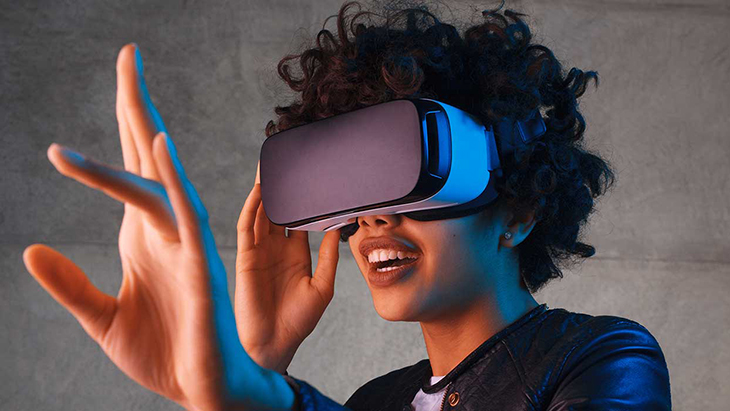Virtual reality (VR), augmented reality (AR), and 3D graphics have quickly become major game changers in the way we shop online. No longer limited to simple 2D images, consumers can now interact with and explore products in virtual environments, creating a more immersive and realistic shopping experience. E-commerce businesses are not only producing more video content to attract customers but also focusing on developing VR, AR, and 3D technologies to boost conversion rates.
Let’s explore the concepts of 3D, AR, and VR and understand how these technologies are revolutionizing the e-commerce industry.
1. What are 3D, AR, and VR?
What is 3D?
3D, short for “3-Dimension,” is a method of creating vivid, lifelike images using computer graphics software. 3D images allow viewers to see and interact with objects from various angles, providing a more intuitive and engaging experience. E-commerce businesses often use 3D graphics to provide detailed product images, offering customers a comprehensive view of the products they are considering.
What is VR?
VR, or “Virtual Reality,” is a technology that immerses users in a completely new, virtual environment created by applications and hardware devices. Users can experience and interact in an artificial world that feels real thanks to advanced technology. VR allows consumers to take virtual tours of products, such as exploring an apartment or a car before they are fully produced.
What is AR?
AR, short for “Augmented Reality,” is a technology that overlays digital information onto the real world, allowing users to interact with virtual objects in a real environment. AR has become a powerful trend in the e-commerce industry, helping customers visualize products in their own space, such as placing a chair in their living room or trying on a piece of clothing virtually.
2. Augmented Reality (AR) – The Retail Trend of Today
In the context of the global pandemic, online shopping demand surged, and AR emerged as a leading technology for providing consumers with more realistic experiences. Customers are no longer satisfied with static images; they want to view products from multiple angles and even interact with them. AR has helped retail businesses attract new customers, enhance user experience, and increase conversion rates.
According to Google’s AR survey in 2019, up to 66% of users said they prefer using AR to assist in making purchasing decisions. This was reaffirmed by a report from Snap Inc., showing that over 100 million consumers have used AR while shopping online or in stores.
3. Differences Between 3D, AR, and VR

While 3D, AR, and VR technologies all offer unique experiences for consumers, each serves different purposes:
- 3D: Creates realistic images of objects in the real world and serves as the foundation for AR and VR applications.
- AR: Places virtual objects in a real environment, allowing customers to interact with products directly in their space.
- VR: Creates a completely new virtual environment, immersing users in a different world to experience products or services.
4. Benefits of Using AR, VR, and 3D in E-commerce
Increase customer trust and reduce product return rates
One of the main reasons customers return products is that they do not meet their expectations. By allowing customers to interact with and experience products before purchasing through AR, VR, and 3D, businesses can provide more detailed information, helping customers make more accurate buying decisions. This not only increases customer trust but also reduces return rates.
Make the shopping experience more engaging
AR and VR create more intuitive and exciting experiences for consumers. Customers can view products from every angle, test out color and design options, and even see how products fit into their own living space. This helps build a strong connection between consumers and products, ultimately boosting conversion rates.
Increase shopping time and conversion rates
Research shows that using video or 3D content to showcase products increases conversion rates by up to 94%. Consumers are more likely to spend more time on a website when they can interact with products through AR or VR, which improves the user experience and boosts sales.
5. The Future of Online Shopping

With continuous advancements in technology, AR, VR, and 3D are transforming how e-commerce businesses engage with customers. These technologies not only enhance the shopping experience but also allow businesses to meet consumer demands more quickly and efficiently. The future of e-commerce will be driven by visual interactivity, where consumers can interact with products before purchasing and enjoy a more personalized shopping experience than ever before.
In the near future, brands and e-commerce businesses will need to invest heavily in AR, VR, and 3D technologies to meet customer expectations and maintain a competitive edge in the rapidly evolving digital marketplace.
Conclusion
Virtual reality (VR) and augmented reality (AR) are not only changing the way we shop online but are also opening up a new future for e-commerce. As technology continues to evolve, consumers will increasingly demand more personalized and visually interactive experiences. AR, VR, and 3D technologies are helping to meet this demand by providing near-realistic shopping experiences, allowing shoppers to fully visualize products before making a purchase.
E-commerce businesses need to quickly adopt these technologies to increase customer trust, reduce product return rates, and enhance conversion rates. Investing in AR, VR, and 3D is not just a short-term trend but a long-term strategy, enabling businesses to keep pace with modern developments and lead in an increasingly competitive marketplace.
In this rapidly growing digital era, technologies like AR, VR, and 3D will become indispensable tools for businesses looking to make an impact and deliver outstanding customer experiences.




